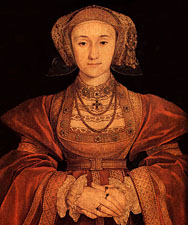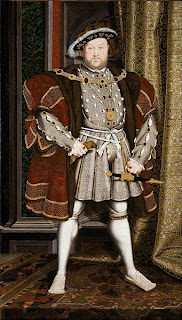Henry VIII wrote Anne Boleyn a
collection of love letters. Anne Boleyn was the soon to be second wife after he
fought many years with the Catholic Church to divorce his first wife Queen Katherine.
Here is an example of one of his many love
letters to dear Anne Boleyn, written in February 1528-
DARLING, these
shall be
only to advertise you that this
bearer and his fellow be
despatched
with as many things to compass
our
matter, and to bring it to pass
as our
wits could imagine or devise;
which
brought to pass, as I trust, by
their
diligence, it shall be shortly,
you and
I shall have our desired end, which
should be more to my heart’s
ease,
and more quietness to my mind,
than
any other thing in the world ;
as, with
God’s grace, shortly I trust
shall be
proved, but not so soon as I
would
it were; yet I will ensure you
that
there shall be no time lost that
may
be won, and further can not be
done;
for ultra posse non est esse*.
Keep him
not too long with you, but desire
him, for your sake, to make the
more
speed; for the sooner we shall
have
word from him, the sooner shall
our
matter come to pass. And thus upon
trust of your short repair to
London,
I make an end of my letter, my
own
sweet heart.
His letters were detailed yet
simple and romantic. Through his letters
we can see that he truly had deep feelings for Anne, but we cannot forget the
tragic ending to their affair when she was not able to bear him a son. We could
even argue that King Henry just wanted something he couldn't have, and the
chase made her more appealing to him but once he was able claim Anne as his
queen and once she bears him a baby girl, he was so quick to end their affair. It
makes me wonder if his feelings to Anne were truly sincere or just because she promised him she would bear him a son.
source from:














